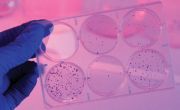Article
Personalized Medicine and the Role of Biologics in Severe Chronic Rhinosinusitis
Author(s):
Research into the pathogenesis of chronic rhinosinusitis has shed new light on the association between asthma and CRS while also providing new insight into CRS disease endotypes, enabling clinicians to individualize treatment regimens.

At the 2014 Annual Meeting of the American Academy of Allergy, Asthma & Immunology, held February 28 — March 4, 2014, in San Diego, CA, Claus Bachert, MD, PhD, head of the Upper Airway Research Laboratory, Department of Otorhinolaryngology, University of Ghent, Belgium, said that the recommendations in the European Position Paper on Rhinosinusitis and Nasal Polyps, published in Rhinology and recently updated in 2012, have proved very useful in practice, but more detailed mechanisms still need to be researched and described in this disease to advance treatment. He described several recent studies that looked at the association between asthma and chronic rhinosinusitis (CRS), including several that looked at the pathogenesis of CRS.
According to Jarvis et al. in an article published in Allergy, a survey of more than 52,000 European adults age 18-75 to determine the prevalence of asthma and its association with CRS found there was a strong association of asthma with CRS across all age groups. The authors noted that the association with asthma “was stronger in those reporting both CRS and allergic rhinitis,” and that “CRS in the absence of nasal allergies was positively associated with late-onset asthma.”
Bachert noted that a subgroup of polyposis patients that develop asthma with activation of the Th2 pathway can be identified by IL-5 and specific immunoglobin E (IgE) measurements. “IgE-positive patients nearly always have polyps,” he said.
Thus, the Th2/IL-5/SE-IgE endotype indicates a high risk of comorbid asthma in patients with CRS, while the neutrophilic endotype (Th1/IFN/IL-17) suggests a low risk for comorbid asthma.
Various tissue and serum markers, such as IL-5, TNF, and MPO have been evaluated to further characterize the endotypes. Marked neutrophilic inflammation is indicated by the markers IL-6, IL-8, Il-17, TNF, and MPO, while marked infection is associated with the presence of IL-22.
Mepolizumab (like reslizumab) is a humanized, anti-IL-5 monoclonal antibody (mAb) that was studied in a double-blinded randomized trial as a treatment option for severe nasal polyps. In the study, published in The Journal of Allergy and Clinical Immunology, 30 patients with severe eosinophilic nasal polyps (grade 3 or 4) were treated with either two intravenous injections, 28 days apart, of anti-IL-5 mAb (n=20) or placebo (n=10).
A significant decrease in polyps score was seen in 12 of 20 mepolizumab-treated patients compared to 1 out of the 10 controls. The effect was equivalent to 2-3 weeks of treatment with steroids, and was sustained for at least one month.
Omalizumab (Xolair) was studied in a double-blinded, randomized trial in a total of 24 patients with CRs and nasal polyps (CRSwNP) that was mostly refractory to standard treatment, including sinus surgery. Sixteen patients were treated with the active drug, versus eight similar patients injected with placebo, every four weeks for 16 weeks. An improvement in polyps score, obtained from sinus opacity measurements in coronal CT scans, was seen in 11.9% of anti-IgE-treated subjects versus 5.9% in the placebo-treated patients (p=0.391). Bachert said that the evidence for omalizumab efficacy in this condition is considered weak.
Treatment benefits such as quality of life need to be further evaluated and the use of new therapies in non-atopic variants of CRS should be encouraged. Bachert said that an anti-IL-4 agent that also covers IL-17 activity is currently in clinical trials.
In terms of potential new treatment approaches, Bachert said that gene therapy using antisense molecules is in the early stages of development. In particular, an inhaled, GATA-3 specific antagonist DNAzyme is being investigated as a candidate for use in Th2-driven inflammatory disease.
In summary, Bachert emphasized the necessity for carefully defining the individual patient’s characteristics in order to predict recurrence, the risk of asthma, and other factors, and determine which therapy, including the new classes of medications (currently all targeting the Th2 pathway), is best suited to treating that particular patient with CRS.





